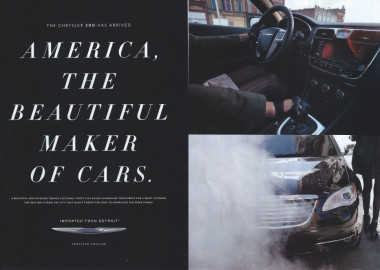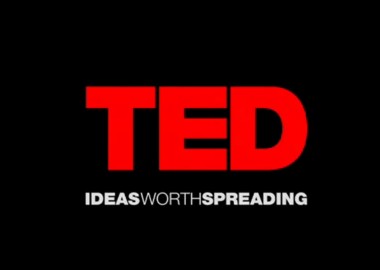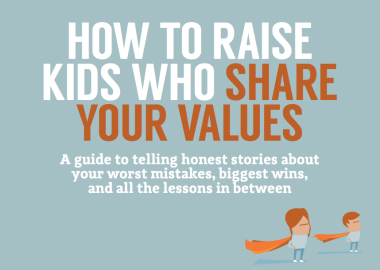
We’re constantly telling our clients that challenges, mistakes, and flat-out failures are integral parts of a story; they’re the crises that keep an audience reading as they root for the hero to persevere, overcome, and emerge on the other side stronger, wiser, and — ideally — happier. Here, then, is where we walk the walk and open up about a recent mistake we made at ECHO, and what we took away from it.
Relationship Trumps Transaction — And Any Tight Deadline
Not long ago we engaged with a client who was keen to get their story on paper. They were coming up (quickly!) on a significant anniversary and wanted a book in time to commemorate the milestone. From the beginning, the project was rushed. It’s the nature of a creative agency like ours to be agile, willing to work like crazy, and never miss deadlines, so the time crunch itself wasn’t unusual. Our mistake was not making the time to properly develop the relationship — which is, and has always been, our key priority with clients.
We firmly believe that relationship trumps transaction. We aim to truly get to know our clients as people — not only so we can craft a story that reflects who they are and what their company stands for, but also because we strongly believe that an intimate relationship between business partners fosters trust. This trust leads to healthy communication, whether that means truly understanding what a win would mean on a project or having tough conversations about missteps and mistakes. And that leads to better work.
But on this particular project, we missed noticing that the client’s objectives had shifted. Our focus was on meeting the deadline of their anniversary but in doing so, we rushed our usual checkpoints along the way: the time we bake into our schedule for thorough review, feedback, and approval.
And whizzing past these crucial milestones without clear communication and trust meant that as the book neared completion, we weren’t actually satisfying their new vision. Clients are allowed to change their minds; but we weren’t asking the right questions to understand that things were shifting. When we finally realized what was happening, we knew we had to sit down with the client to clarify and truly understand what they now wanted, but for them it was too late. They took the project to another agency. And that all-important deadline? We learned at the eleventh hour that it wasn’t as important as we thought.
How to Fix the Problem
So how does an agency or a client avoid reaching this point of no return? It’s all about discovery.
For us, the “discovery” phase of a project takes place before we even schedule our project kickoff meeting. And after our recent learning experience, we reviewed and refined this phase — both to confirm its necessity and to improve it. Within the discovery phase, we now do extra research to deeply understand our client. We identify key client stakeholders who will have strong opinions on the project. That includes the project champion, of course, but also a “healthy contrarian” too: that staff member or executive who may not yet see the value in our services. And we ask tough questions from the beginning so that we can understand the overarching project vision, along with each individual’s perspective. Those questions might sound something like:
What scares you the most about this project?
What is the one thing we must get right?
What is the worst thing we could do?
What does success look like for you?
This confirmation takes time. Each conversation might last 30 or 45 minutes, but they’re so worth it: they reveal rich information that helps us navigate the personalities involved and sidestep problems before they arise. We assure our interviewees that everything they say is off the record, and encourage them to be honest and candid in their responses.
These findings go into a document that summarizes what we discovered and what we uncovered — that’s what we review and confirm at the kickoff. The “discovery doc” is our blueprint, clarifying expectations and guiding the general shape of our work to come. It’s something we can return to with our clients, and have conversations about, when (not if) issues arise. That’s what healthy relationships look like, after all.
Testing the Process
We’ve applied our refined discovery process to all of our recent projects, and the results have been clear. Knowing from the outset what a client’s biggest fear is helps us avoid it at all costs; and knowing what challenges they foresee has allowed us to anticipate — and avoid — roadblocks. And when there’s trust and open lines of communication, all of us, at ECHO and with our clients, feel comfortable picking up the phone or writing a quick email to get clarification, ask a favour, provide an update, or simply say, “I hope your anniversary party on the weekend was a blast!”
Discovery, for us, provides the foundation of a shared vision. With it, we can build trust, and when it’s time to have those tough conversations we can rely on its insights to re-orient us and give context to provide and receive criticism. Remembering what we jointly agreed to accomplish, we’re that much closer to success.
Tough Lessons Are Lessons Well-Learned
For us, the mistake of rushing discovery and relationship building was an important one to learn from.
While our client ultimately took the project to an agency they’d previously worked with, there was still a sort of happy ending. Because we so profoundly wanted to understand what went wrong and learn from the experience, we asked to sit down with the client to conduct a post-project review — and we’ve taken those lessons to heart, applying them to the rest of our current clients and altering our process for the next ones.
That client has since assured us that they wouldn’t hesitate to recommend us to anyone. Which shows that, even though we felt we hadn’t properly fostered the relationship, we actually did manage to trump the transaction and leave them with a positive impression.





